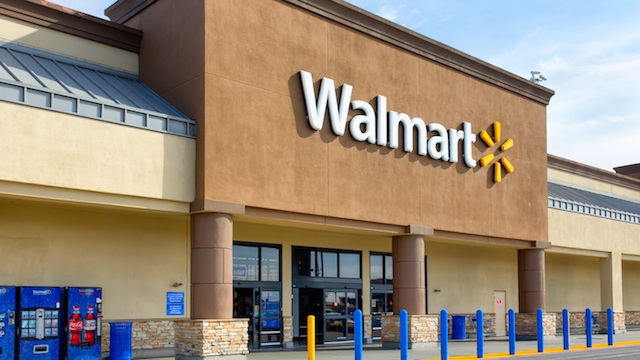Despite its size and scale Walmart globally is a remarkably nimble retailer that is, on the whole, responding and reacting well to the various changes and challenges in the retail landscape.
Walmart has posted a mixed set of numbers for its second quarter, with the polarisation between its core US business and the international division still evident.
However, on the whole this is a positive update which indicates not only an improved performance in core areas of the business but also underlines the company’s determination to drive future sales growth through innovation.
Walmart US
On the domestic front, a 1.6 per cent uplift in comparable sales at Walmart US represents good momentum on the prior quarter and highlights the fact that Walmart more than held its own in what was a somewhat difficult trading environment. It is particularly pleasing that most of the uplift was underpinned by increases in customer traffic. This demonstrates that Walmart’s strategy of improving the in-store shopping and customer service experience is being noticed and is successfully driving trade.
The grocery business, which at total market level remains highly pressured and competitive with a good dose of deflation, was a winner for Walmart over the period with trade strengthening since the first quarter. Both sales and traffic remain positive for the grocery business. This is an impressive outcome given the continued rise of cheaper food players like Aldi and, the admittedly more range-constricted, dollar stores. While the store improvements have undoubtedly aided this result, Walmart’s investments in price and a stronger communication of the price message were also invaluable in helping the company to make gains.
Despite the ongoing sharpening of prices, food and consumables contributed to the 33 basis point improvement in gross margins over the quarter. Procurement savings, reduced transportation costs and the lower cost of fuel all helped to enhance margins.
The battleground – especially in grocery – is now being fought on Walmart’s turf and Walmart is getting back to its heritage by focusing on everyday low prices and ensuring profitability is enhanced by improving efficiency.
That said, operating income is down by 6.2 per cent, mainly because of the scheduled wage increases. This is to be expected and, over the long term, is something Walmart will be able to offset with improved sales growth and savings in other areas.
eCommerce
Sales in the eCommerce part of Walmart’s business grew by 11.8 per cent overall and by a slightly higher level within the US. While this is a respectable rate of increase it is one that remains below growth across the market as a whole, and quite some way below the growth of Amazon. In other words, it shows that Walmart is still playing catch-up in eCommerce, something that it has recognised with its agreement to acquire Jet.com.
The Jet.com deal will accelerate eCommerce growth at Walmart. This is not just because of the acquisition of the platform or the thinking behind it, it is also because it sets a more ambitious tone and injects new leadership into the business. Walmart is likely to be nimbler and more experimental on eCommerce going forward and if it can get omnichannel right and leverage its store and logistical base it presents a very real threat to the continued rise of Amazon. Admittedly, there is still some distance to travel before this becomes a reality.
International & Asda
As much as the US side of the business is showing momentum, the results from the international division were more disappointing, although not unsurprising. While total sales fell by 6.6 per cent it is important to note that nine out of 11 of Walmart’s international divisions posted growth. However, other segments fared less well – most notably Asda in the UK where comparable sales, excluding fuel, tumbled by 7.5 per cent. This is a calamitous outcome and one that certainly reflects the challenges of the UK market, but also underlines the inadequacy of Asda’s response to it.
The main issue is that Asda continues to lose custom to the more price-focused deep discounters like Aldi and Lidl. These players have blunted Asda’s traditional low price message and it is now imperative that it starts to regain the ground it has lost. If this means sacrificing short term profit then that is a price the company will need to pay: it is, after all, losing that profit in reduced sales anyway.
Walmart, as the biggest retailer in the world, has the firepower and expertise to fight back, but up until now it has been a sleeping giant. These figures will act as a wake up call and that position will now change. However, this – together with the weaker value of sterling relative to the dollar – may well put forward pressure on the group’s bottom line.
Looking ahead, Walmart is on the right track.
- Neil Saunders is CEO of Conlumino.






